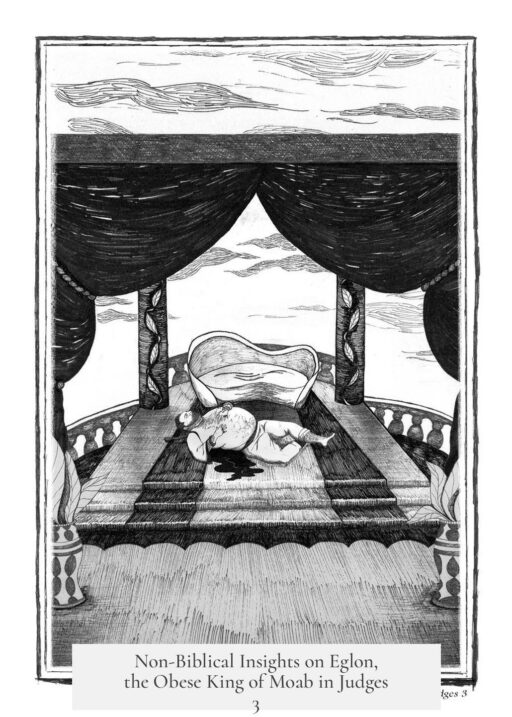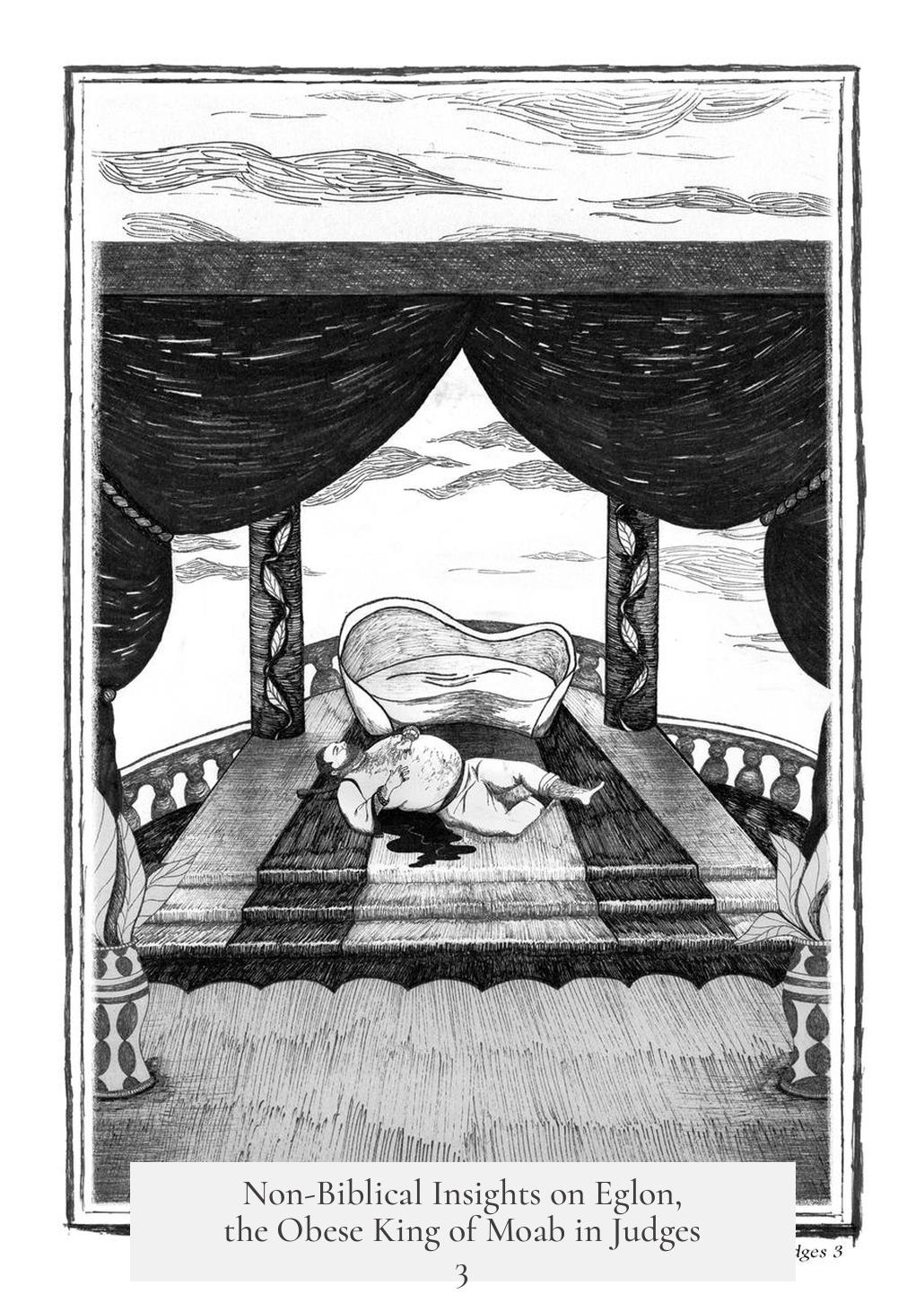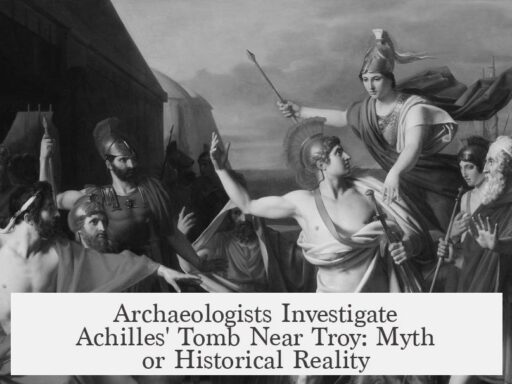No contemporary non-biblical sources provide information about Eglon, the obese king of Moab, who is described in Judges 3 as assassinated by Ehud. The earliest external inscriptions mentioning Moab date to around 850 BCE, several centuries after the traditional period of the Judges. Eglon’s story, therefore, remains confined to biblical texts, with no archaeological or textual evidence from his own era to corroborate the narrative.
The biblical account places Eglon’s reign and assassination roughly in the early Iron Age, around 1200 BCE or earlier. However, this period lacks surviving inscriptions or external records about Moabite leadership. The first substantial non-biblical source mentioning Moab is the Mesha Stele, dated circa 850 BCE. This monument commemorates King Mesha of Moab’s revolt against Israelite rule. While it confirms Moab’s existence and some interactions with Israel, it appears centuries after the time references in Judges.
Similarly, the Merneptah Stele, dating near 1200 BCE, marks one of the earliest external mentions of Israel but contains no references to Moabite kings or Eglon. The Mesha Stele and other extrabiblical sources, such as Assyrian inscriptions, provide scattered historical context on Moab-Israel relations but do not extend back to Judges periods or validate the biblical stories around Eglon.
Regarding Eglon’s assassination by Ehud, this event functions within a narrative style resembling a folk tale or legend. The Book of Judges features cycles of stories with clear theological and moral aims. Critical scholarship often views these accounts as composites of older oral traditions, shaped later by the Deuteronomist authors. They are not straightforward historical chronicles with external verification.
No contemporaneous Moabite inscriptions or external texts mention Eglon, Ehud, or the event of regicide on a toilet, as described in Judges 3. These elements are unique to the biblical text. Later biblical references to Moabite kings and cultural influences—such as Solomon’s temple to Chemosh—stem from Israel’s monarchic period, long after the Judges.
Thus, the biblical narrative about Eglon is the sole source for this story. It sits within a context of complex intercultural relations between Israel and Moab, partially illuminated by later artifacts but lacking direct confirmations of early Judges-period events.
| Aspect | Details |
|---|---|
| Timeframe for Eglon | ~1200 BCE or earlier (Iron Age I), traditional Judges period |
| Earliest Moabite External Record | Mesha Stele (~850 BCE), mentions King Mesha, postdates Eglon |
| Non-Biblical Mentions of Israel | Merneptah Stele (~1200 BCE), no Moabite or Eglon references |
| Existence of Contemporary Records on Eglon | None available; no inscriptions or texts confirm or expand on the biblical tale |
| Narrative Character | Part folk tale, part theological history; lacks corroboration |
The broader historical context shows Moab and Israel had conflicts and cultural interactions. These are reflected in later inscriptions and biblical reports but remain separate from Judges-era events.
Key takeaways:
- No contemporary extrabiblical sources mention Eglon or his assassination.
- The Mesha Stele (~850 BCE) is the earliest external Moabite inscription, centuries later than Judges.
- The story of Eglon and Ehud is unique to the biblical text, with a folk tale character.
- Later texts confirm Moab-Israel relations but do not provide direct evidence for Judges’ narratives.
- Critical scholarship sees the Judges stories as theological and folkloric compositions rather than strict historical records.
Do Non-Biblical Sources Tell Us Anything About Eglon, the Obese King of Moab Assassinated on the Toilet in Judges 3?
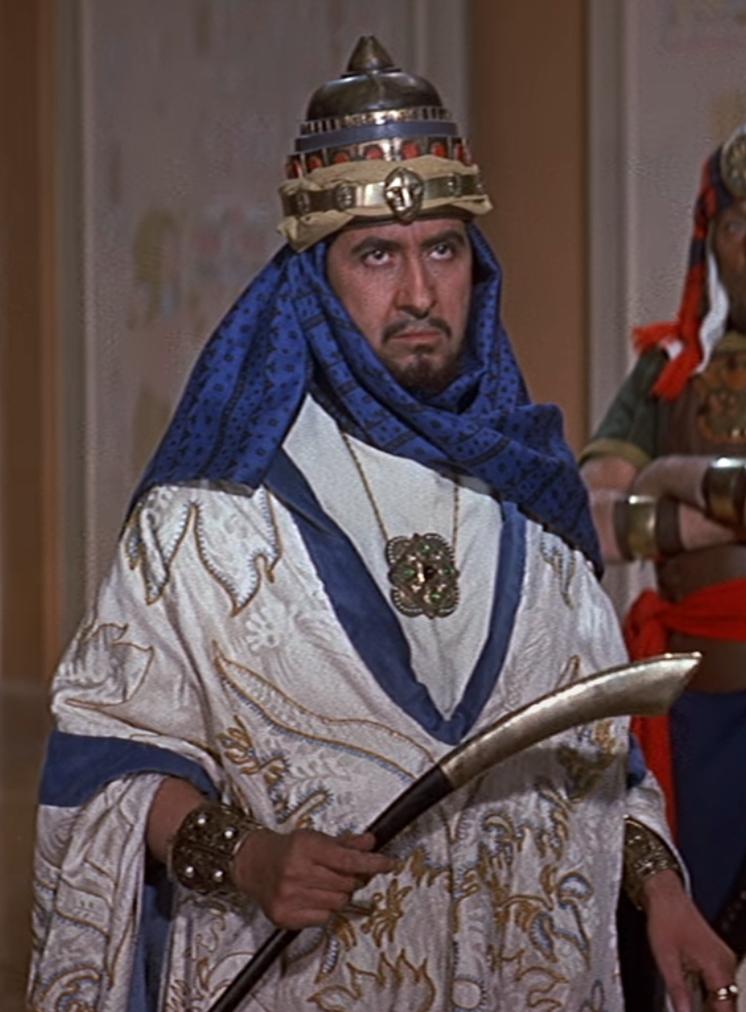
Short answer: No, non-Biblical sources do not provide any information about Eglon, King of Moab, or confirm his notorious assassination. Everything we know about this corpulent monarch—and yes, that vivid “toilet throne” scene—comes exclusively from the biblical Book of Judges, specifically chapter 3. So, no ancient Moabite wall carvings or mysterious cuneiform tablets corroborate this tale. Let’s explore why that is and what the historical context reveals.
Picture the scene: Ehud, a left-handed Israelite judge, assassinates King Eglon by stabbing him while the hefty ruler is on his private throne. It’s one of the Bible’s more bizarre and memorable assassinations. But does history echo this? Or is it just ancient narrative flair? Spoiler: the archaeological and inscriptional record outside the Bible stays mute on this matter.
The Void of Contemporary Non-Biblical Records
The events narrated in the Book of Judges, including Ehud and Eglon’s episode, are traditionally placed around 1200 BCE or earlier, a hazy epoch with scant archaeological documentation that can be matched explicitly to these stories.
We have no Moabite inscriptions dating from this early period. The earliest extra-biblical source mentioning Moab is the famous Mesha Stele, dating approximately to 850 BCE, about three centuries after the Judges era.
Why is this gap important? Imagine trying to verify ancient Roman emperors with no records until centuries later—it quickly becomes a tricky historical puzzle. The Mesha Stele speaks of Moab’s later struggles with Israelite kings, but never Eglon or early Judges events.
Later Moab and Israel Relations Are Better Documented
The Mesha Stele gives us interesting stuff: it boasts King Mesha of Moab’s victory over Israel and even names Israelite kings like Omri. This confirms that Moab and Israel tangled repeatedly in later centuries, and the struggle influenced their culture and politics. But—crucially—this stele arrives much later, too far removed in time to shed light on Eglon’s story.
Also, the Bible itself reveals some Moabite influence on Israelite religion, such as Solomon’s controversial temple to Chemosh (1 Kings 11:7). But that’s biblical narrative again. Non-biblical sources beyond the Mesha Stele remain silent on those early Moabite-Israelite dynamics.
The Nature of the Judges’ Stories: Folklore or History?
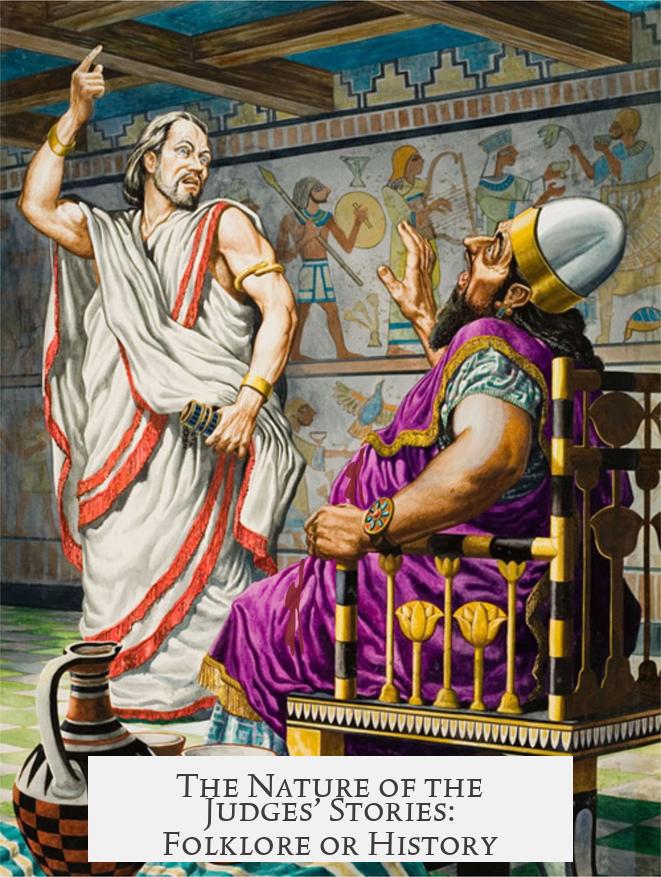
The stories in the Book of Judges, including Eglon’s assassination, often resemble cycles of folk tales rather than dry history. Scholars call the collection the handiwork of the “Deuteronomist,” a compiler weaving oral traditions, moral lessons, and cultural memories into a religious saga.
Some narratives sound like legendary yarns designed to underscore divine justice, social order, or national identity. The quirky assassination methods, theatrical death scenes, and colorful characters hint at storytelling flair, not court chronicles.
This doesn’t mean there’s no historical kernel. The cycles likely reflect memories of real struggles between early Israelites and neighboring peoples like Moab. But specifics about Eglon’s girth—and his grisly end on a “toilet throne”—have no visible footprint outside scripture.
Why No Archaeological Evidence for Eglon?
Given that Moab did not leave behind extensive early records, especially before the Mesha Stele, historians rely on scant material culture, such as pottery and settlement remains, which can rarely confirm events or individual rulers by name.
Additionally, the Iron Age Early period (roughly 1200 BCE) is poorly documented across the Levant. Royal inscriptions like those from Egypt’s Merneptah Stele mention Israel but say nothing about Moabite kings in this era or their conflicts with Israel.
So, even if Eglon was a real king, his legacy—the memorable assassination scene—does not survive in contemporaneous records outside the Bible. The silence speaks volumes about the limits of archaeology and chance discoveries.
How Should We Treat the Ehud and Eglon Story Today?
The story is invaluable as part of Israel’s cultural memory and theological tradition. It serves as a moral tale about deliverance and divine intervention rather than a strict historical report. When you read about Ehud’s assassination trick, lean into its vivid imagery and symbolic power.
Historians and archaeologists recommend viewing early Bible stories as a mix of folklore and history, great for understanding ancient beliefs and politics but fragile for factual precision. In Eglon’s case, non-Biblical sources are like that silent friend who never spills the tea—no extra confirmation or juicy secrets here.
What About Other Kings of Moab or the United Monarchy?

Interestingly, non-Biblical texts such as the Mesha Stele mention later Moabite kings and interactions with Israel’s monarchy, validating some biblical elements about later eras. However, the earliest Israelite kings—Saul, David, Solomon—lack contemporary non-biblical inscriptions to confirm their reigns. The Judges period, earlier still, sits entirely in the realm of oral traditions and biblical narrative.
This gap reminds us: history is part detective work and part storytelling. The Bible preserves fantastic legends and probably some historical echoes, but without external sources, we can’t fully separate fact from folklore.
In Summary: The “Obese King on the Toilet” is a Biblical Standalone
- No contemporary non-Biblical sources exist for Eglon or the Judges period. The Mesha Stele (circa 850 BCE) is the earliest Moabite text but far too late to mention Eglon or Ehud.
- The Ehud-Eglon assassination story stands solely in the Bible. There are no corroborating inscriptions or artifacts.
- Judges’ stories blend folklore and theological messaging. They provide cultural and moral lessons, not precise history.
- Later Moab-Israel relations get documented externally. Moabite resistance and kings appear in later inscriptions.
- Historical veracity remains speculative. Eglon’s assassination is a vivid tale, most likely a folk memory shaped into a legendary drama.
So next time you read about Eglon’s dramatic downfall in Judges 3, remember: it’s an epic story tapping into ancient cultural narratives—and while it may not be archaeology-approved history, it remains one of the Bible’s most oddly captivating episodes. Wouldn’t history be dull without a few obese kings meeting their end in… creative circumstances?
